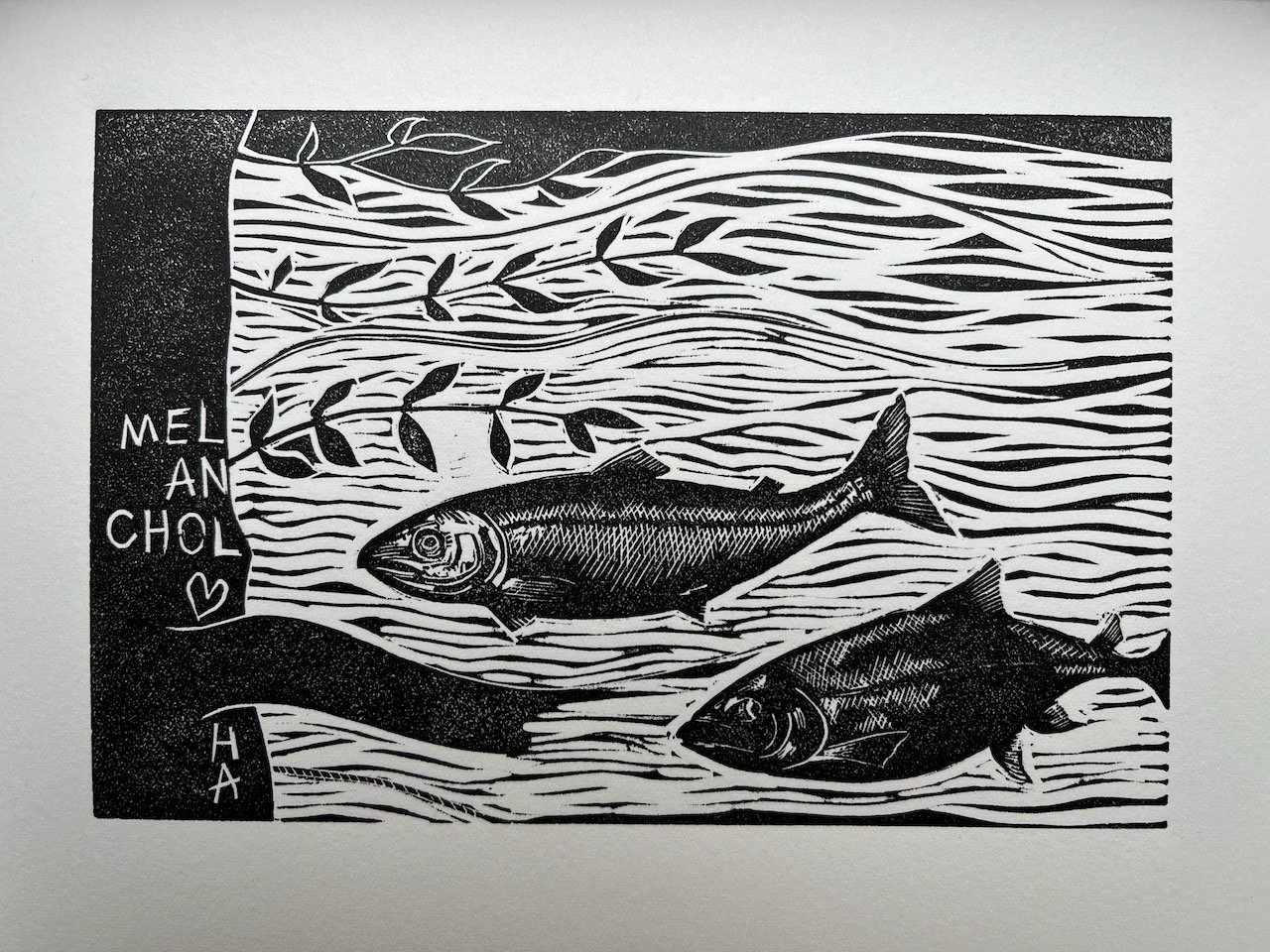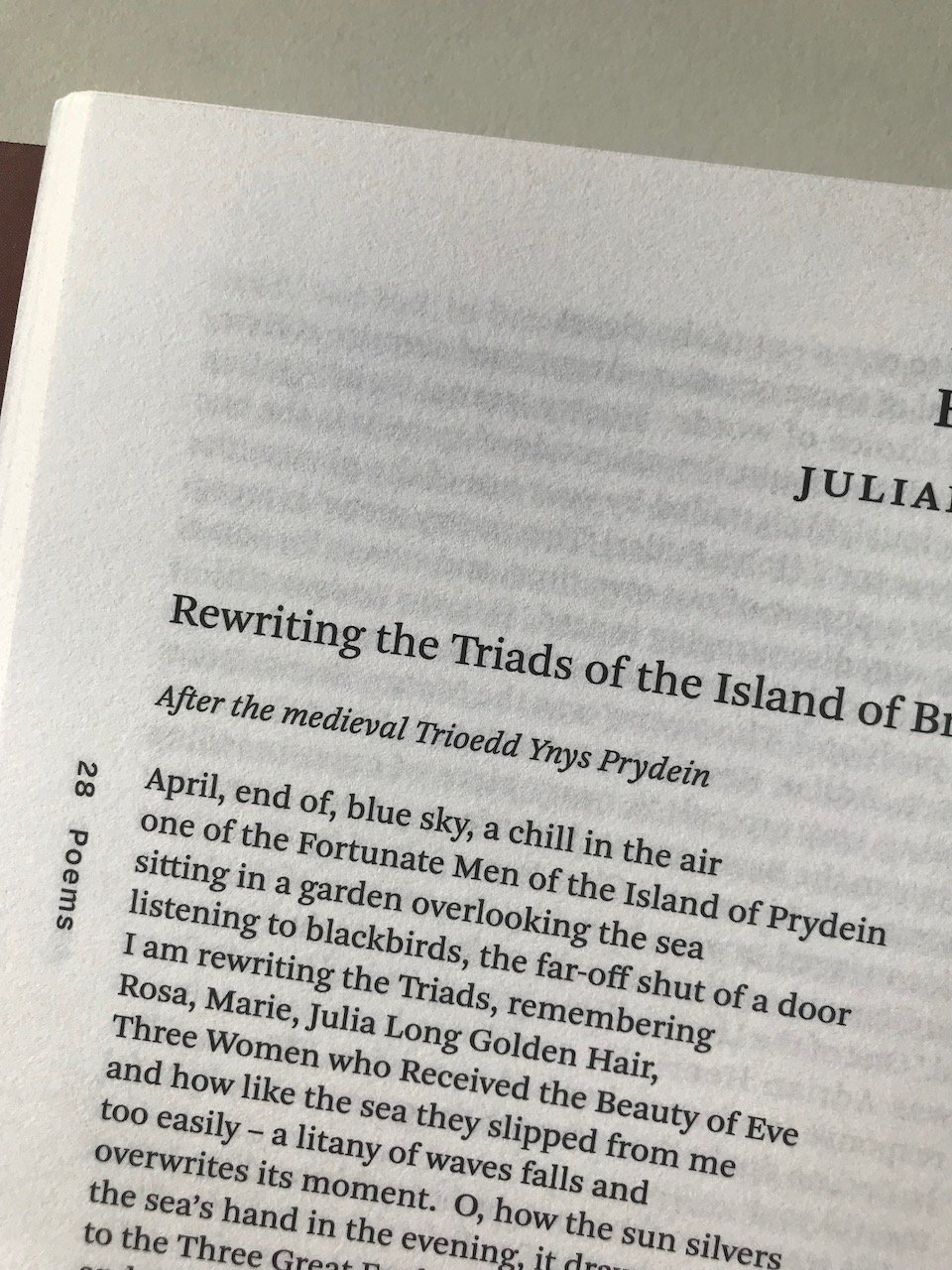Sometimes simple is the hardest thing
I recently made a small drawing in my journal of a tree that is comprised of one continuous line made without lifting the pencil from the paper. In part, the drawing was a means of exploring how I might frame ‘The Happy Tree’ that I have been working on through various prints. It was also a study in connectedness.
Tabula Rasa
I am currently working on a print in my series ‘The Happy Tree’, and have been sketching ideas for the concept ‘Before happy’. The pencil drawing above is one of the many sketches that I have made so far and one that I particularly like. I had planned to develop the drawing further…
Melancholy Happy
What is
is because
and includes its was not.
By which, in the case of art, I mean that what we see in a ‘finished’ piece is a product of choices — erasure being one, rejection another. An idea forms, is played with, is subject to the limits of an artist’s technique, is rarely (never) fully realised.
After the cut the paper
Handbooks on relief printmaking tend to be roughly divisible into two parts: the first and larger part being concerned with ‘the art’ of things (composition, tools, techniques, subjects, examples), and the latter part focusing upon mechanics — that is, printing. Paper, despite the fact that books are made of it, tends to get barely a mention, and yet paper, like ink, can be the making of a print.
Parent Poems
During the early months of the Covid pandemic I spent a good dealt of time with two books: The Poems of Norman MacCaig and Galway Kinnell’s Collected Poems. Both books drove me to write.
The Happy Tree
Around eighteen months ago I began work on an idea called ‘The Happy Tree’. The tree grew out of a series of conversations with Amandine Robaey on the nature of happiness. Thinking about the roots from which happiness springs and of some of the manifestations of happiness, we came up with a long and non-exhaustive list of ‘happies’.
Bring home the wood*
A cold and frosty December morning. Two collared doves spiral twenty feet up from the ground. Almost touching — I like to think they are courting.
I am in the garden, carrying wood (endlessly it seems) down to the wood shed, and the birds’ flight holds me. The air still but for the beat of their wings, the sky blue, the sun breaking low through trees. Little moments.
A Pattern Formed
‘You have spoken of “first patterns” — of images without existence save in the soul of the carver, but which transmutes into matter, making them visible. …And this same “first pattern” — this shape — is, to a hair, what old philosophers called “the idea”.’
The Act of Irretrievables
Carving lino or engraving wood, I find myself endlessly killing what my eyes see. The tool marks a shape; you work around the shape and other shapes appear. Or more correctly, they insert themselves — not having previously been sketched or envisaged — they are born from the movement of the tool. Its water.
The House of the Long Stay
Dolbadarn castle lends itself to the artist. Perched on a knoll between the waters of Llyn Padarn and Llyn Peris, and glowered down upon by the Glyderau to the northeast and by the wall that is Yr Wyddfa to the southwest, the castle was painted by Turner in 1798.
Crawia
Crawia are a form of fence typical to the slate quarrying areas of North-west Wales. Made from waste slate (‘craw’), they stand with their feet buried in the earth, each slate linked to the next with fencing wire that wends its way before and behind them as a weft does to a warp. The very fabric of hills, of fields and villages, they stitch field to moor, house to road, the land to the sea.
San Miguel de Abona
When, on one occasion, W.H. Davies met with Walter de la Mare, de La Mare asked him how he wrote his poems. ‘A plain and simple question’ thought Davies, to which he responded: ‘First an idea comes to me.’
‘What do you mean by “an idea comes to you”?’ replied de La Mare.
The Eye and the Hand
Sometimes one find oneself spoken through the words of other people; it is then one realises how universal is the particular.
An unlikely poem
From A Dictionary for One, Uncertain Press, 2023
Stigmata n. Moments that brand, and as a consequence of which the remainder of life is spent wondering why. colloq. Self-spectre. Those commonly affected by stigmata (stigmatists, n. uncertain) think to return to the place and moment of their mark, but (imp.) few do.
Maeni Hirion, Penmaenmawr
Would you come here on days of winter, cold
like this, crossing the haunch of Tal y Fan
from the shade of your valley
to watch the sky burn itself to sleep—
or was this only ever a place for dead people?
Three poems
April, end of, blue sky, a chill in the air
one of the Fortunate Men of the Island of Prydein
sitting in a garden overlooking the sea
listening to blackbirds, the far-off shut of a door
I am rewriting the Triads, remembering
Rosa, Marie, Julia Long Golden Hair,
Three Women who Received the Beauty of Eve
The Cherry Trees
All the month long
the cherry trees have been readying boughs
with their bob and curtsey petticoats
wedding the chalk-blue, blackbird fluted air—
and when at night the wind comes,
singing its caresses through the branches,…
Between words
In the space between words their intention
Seven words, two prepositions, one determiner, one pronoun, three nouns, each with their own dictionary entries. Put them together and what do they mean? That meaning is not the sum of the words used, but what is not said? As a musician might have it, that the music is in the silence between the notes? That words are what they are not?
In the shadow of the Great Strike of Penrhyn
‘Cold on the picket line’ the first line from my poem ‘In the shadow of the Great Strike of Penrhyn’ which contrasts two strikes that took place within seven miles of each other, albeit separated by 116 years.



















